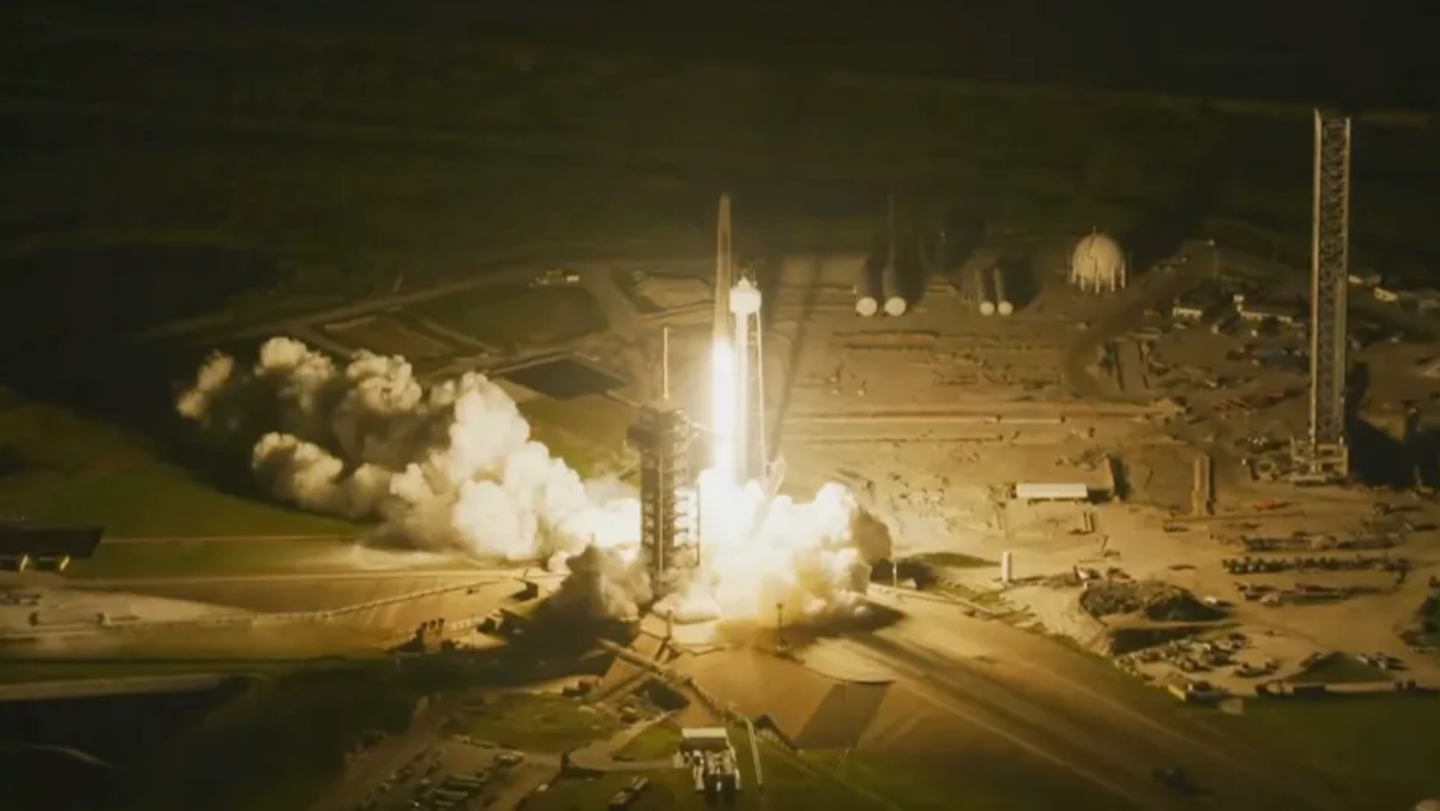
The crew of Axiom Mission 4 successfully launched today at 8:31 a.m. CEST from Launch Complex 39A at NASA's Kennedy Space Center in Florida. The SpaceX Dragon spacecraft, named Grace, is now in orbit and scheduled to dock with the International Space Station at approximately 1:00 p.m. CEST on 26 June, connecting to the space-facing port of the Harmony module. (Image: Axiom Space)
He's wasting no time, to say the least. Selected in 2022 from over 22 500 applicants to be one of the 11 members of the astronaut reserve pool of the European Space Agency (ESA), Sławosz Uznański-Wiśniewski, a former CERN engineer, is already in space!
Sławosz and his colleagues from the Axiom Mission 4 (Ax-4) crew took off today at 8:31 a.m. CEST from NASA's Kennedy Space Center in Florida aboard a SpaceX Dragon spacecraft. Dragon and the crew will dock with the International Space Station (ISS) tomorrow and will spend up to 14 days there.
Sławosz is the second Polish astronaut since 1978, and the second of a new generation of European astronauts, to fly on a commercial human spaceflight with Axiom Space - which he joins as mission specialist. Europe is teaming up with a commercial space company to show how fast-track, short-duration missions can generate good science, outreach and education for a better life on Earth.
- Sławosz Uznański-Wiśniewski during the press conference
with the Ax-4 crew ahead of launch, on 3 June 2025.
During the ESA mission - called Ignis - Sławosz will carry out 13 experiments proposed by Polish companies and institutions and developed together with ESA. Focusing on four key areas, this mission will contribute to advancing our understanding of human health, technology, materials science and biotechnology in space.
CERN will have the pleasure of seeing one of its technologies being tested on the ISS by Sławosz himself. Indeed, in 2024, CERN collaborated with the Polish start-up SigmaLabs on the SpaceRadMon-NG (SRM) project, a next-generation miniaturised version of the Large Hadron Collider's well-proven radiation monitoring device. And it's none other than Sławosz who is taking the SRM into space, where it will monitor radiation levels and their effect on electronic chips to support the development of more resilient systems for satellites and future space missions. How better to come full circle than to see a former CERN engineer test a CERN technology in space?
Alongside the experiments conducted by Sławosz, the Ax-4 research programme includes many scientific studies and activities involving 31 countries. This will be the largest number of research and science-related activities conducted on an Axiom Space mission aboard the ISS to date, underscoring the mission's global significance and collaborative nature with the goal of advancing microgravity research in low-Earth orbit. The mission features scientific portfolios led by the US, India, Hungary and, as mentioned, Poland/ESA. The aim is to boost participation in space research in these countries by involving diverse stakeholders and showcasing the value of microgravity research, and to foster international collaboration - a subject close to CERN's heart. No wonder that ESA and CERN signed a bilateral cooperation agreement ten years ago to share expertise and facilities. This year therefore marks a decade of innovation.
We wish Sławosz all the best for the coming days. We will follow him from terra firma and wish him a safe return to Earth.






